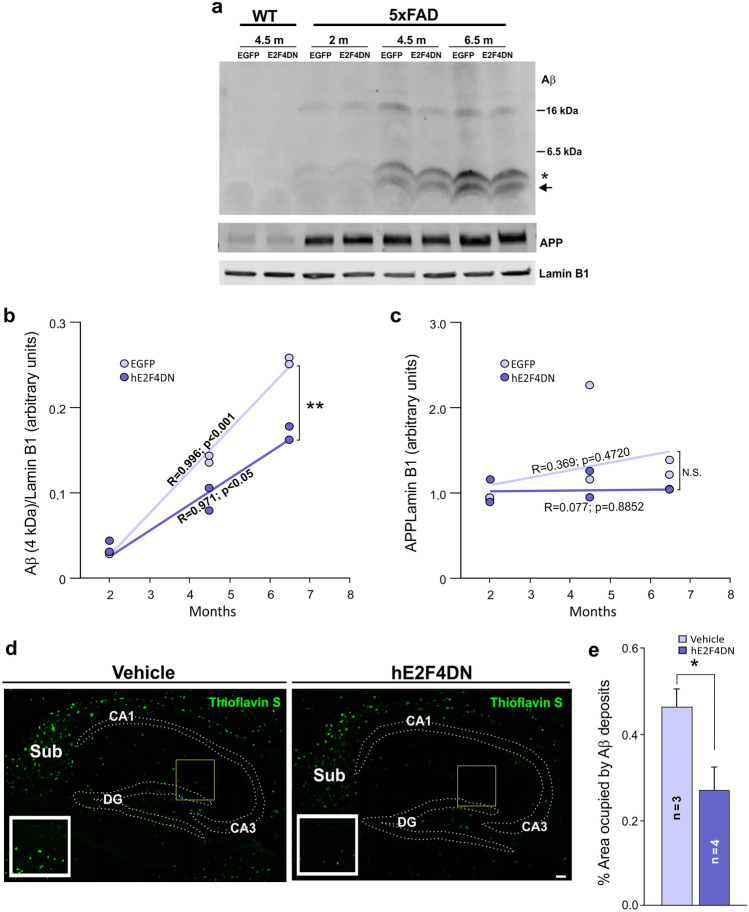Fig. 3.
Systemic administration of the AAV-hE2F4DN vector reduces Aβ production and accumulation in the hippocampus in h5xFAD mice. (a) Representative western blot of hippocampal extracts from wild-type (WT) and h5xFAD mice of 2, 4.5, and 6.5 months of age administered with either AAV-EGFP (EGFP) or AAV-E2F4DN (E2F4DN) at 1.5 months, revealed with anti-Aβ, APP or Lamin B1 (loading control) antibodies. Asterisk: Aβ band (4 kDa). Arrow: processed Aβ monomers. (b, c) Ratio with Lamin B1 of Aβ monomer (4 kDa; b) or APP (c) in hippocampal extracts from h5xFAD mice administered with either AAV-EGFP (EGFP) or AAV-E2F4DN (E2F4DN) at the indicated ages. A significant correlation with time was observed for the level of Aβ monomer in both experimental situations. A statistically significant decrease of the regression slope was observed in E2F4DN-treated mice (t = 4.651209, p = 0.00164210; t test). N.S. = nonsignificant. (d) Aβ amyloid deposits in the hippocampus of 6.5-month-old h5xFAD mice administered with either vehicle or AAV-E2F4DN (hE2F4DN) at 1.5 months, stained with thioflavin S (arrows). DG = dentate gyrus; CA1 = cornu ammonis 1; Sub = subiculum. Scale bar, 50 μm. (e) Quantification of percentage of total area occupied by the Aβ deposits in the hippocampus. *p < 0.05 (two-tailed Student’s t test)

